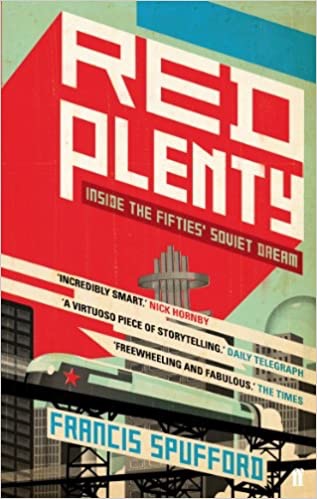Red Plenty
A daring and fascinating study of what the Soviet Union was trying to do in the years after the great famines. Spufford attempts to capture not the budgets and programs but what people believed and the goal toward which they together were working — a vision of abundance that would forever put the specter of medieval Russia to rest.
Spufford does this through a series of lightly fictionalized vignettes, scrupulously documented, that try to show clearly what everyday people thought they were trying to do. The core idea here was not bad: where capitalist markets waste lots of effort and material to discover an equilibrium price, systematic planning and linear programming can discover that price from first principles. If you invent a new kind of car, in America you’d have four companies building four variants. They’d spend lots of money on marketing and lobbying and PR, and it might take a decade to figure out which was best. Every part in that car undergoes the same wasteful process. If you could just get things right the first time — even close to right — you’d save a tremendous amount of time and money. You might be wrong sometimes, but even then, you only need to be a few percentage points faster and smarter than the wasteful random experimentation of capitalism.
It didn’t work, but they weren’t all idiots.
